Earth Works



She is a lead forestry technician and silviculturist for the U.S. Forest Service, working in the George Washington and Jefferson National Forest in Winchester, Virginia.
In her role, she’s a land manager of about 600,000 acres in the North Zone of the 1.8 million-acre forest. She implements and monitors the restoration and reforestation of shortleaf pine trees, assists researchers with regeneration studies, coordinates volunteers and work crews, and collects data for future forest management.
“Silviculture is a sustainable way to grow and cultivate trees in order to manage the establishment, growth composition, health and quality of a forest,” Dormio says. “In other words, silviculture is an art just as much as it is a science.” Dormio says a key element to the health of the forest is removal of non-native invasive species, such as tree of heaven, autumn olive, empress tree, multiflora rose, Japanese barberry and mile-a-minute. She says all have the potential to compete against native trees such as oak and yellow pine, thus changing the ecosystem of the forest. The forest service uses herbicides in a safe way to combat the spread of NNIS.
“From experience, we know that most NNIS are aggressive and will grow back with a vengeance if they are simply pulled out of the ground and left. Some NNIS even proliferate faster after being damaged,” she says. “The forest service has been consistently working toward detecting and reducing the impact of NNIS on the George Washington and Jefferson National Forest North Zone ecosystems.”
Dormio came to ECU to obtain a master’s in ecology and evolutionary biology, drawn to Greenville for its program and research as well as its biodiversity.
“Basically, there are a ton of amazing amphibian, reptile, bird and tree species that I’d never seen before, and I was stoked,” says Dormio, who grew up in Leesburg, Virginia.
Dormio says she felt at home at ECU, enjoying meals at the Mellow Mushroom. She remembers a road trip to New Orleans to participate in a conference.
“The van wasn’t very comfortable at all, but the laughs we had can’t be matched. I made a lot of pretty great friends while pursuing my graduate degree,” she says.
She says teaching labs, working on research, writing grants and collaborating with some of the top minds in the field allowed her to grow.
“All in all, the experiences I had while attending ECU molded me into the person that I am today,” Dormio says. “If it wasn’t for this program, I most likely would not be working for the forest service right now.”
– Ken Buday
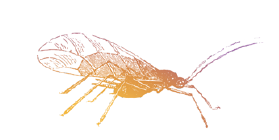 Growing up on the family farm in the Rhems-Tuscarora community outside New Bern, Alvin Simmons ’80 loved watching bugs.
Growing up on the family farm in the Rhems-Tuscarora community outside New Bern, Alvin Simmons ’80 loved watching bugs.“The farm provided an environment that was essentially an encyclopedic view of the world of science, and entomology was one aspect,” he says in a recent email interview. Wasps and bees stung him, but their social behavior and value as pollinators fascinated him. Likewise the many flying and crawling insects that swarmed to the nighttime porch light and bonfires.
“I observed a lot of different types of insects in the different environments, and I recognized that some were pests, some were beneficials, some are economically insignificant, and some were just beautiful,” he says.
Simmons took that love for insects and turned it into a career. After graduating from ECU with a biology degree, he enrolled at the University of Kentucky, earning master’s and doctoral degrees. Since 1992, he has worked with the U.S. Department of Agriculture as a research entomologist in Charleston, South Carolina. He specializes in insects that impact vegetables. He’s also an adjunct faculty member at Clemson University and the College of Charleston.
He’s written or co-written 104 refereed journal articles, plus book chapters, coreleased five breeding lines and provided more than 300 technical reports resulting in over 200 pesticide labels. He has given invited talks at numerous professional conferences and has traveled to 30 countries.
One insect he focuses on today is the global pest Bemisia tabaci, the sweetpotato whitefly, and its associated natural enemies. It feeds on many crops and transmits many viruses and demonstrates there are more questions about climate change than answers.
“Based on research by other scientists, this whitefly has already demonstrated its ability to develop resistance to several types of insecticides,” he says, indicating it may be more adaptable to stress than other insects, and thus more adaptable to climate change. But that’s not all.
“Mild winters favor population increases of whiteflies in the spring, while cold winters may limit their ability to survive. Frequent overhead irrigation or frequent rainfall events can have adverse effects on whitefly populations by physically killing some of the insects. There are other factors such as competition among pests for food that may affect either insect population in a climate change environment. Many questions remain about the direct impact that climate change has on food plants and ornamental crops.”
In 2016, Simmons co-chaired the International Congress of Entomology, which was the largest-ever gathering of entomologists with nearly 7,000 delegates from 101 countries attending. In 2019, his peers elected him president of the Entomological Society of America. “I look back with appreciation for the ESA governing board in working with me in leading ESA on improving members’ diversity, inclusion and equality, as 2020 provided an opportunity for this society to focus on being a society of entomology for all,” Simmons says. “Interacting with subject experts from across America and around the world regarding all entomological subjects was priceless.”
– Doug Boyd
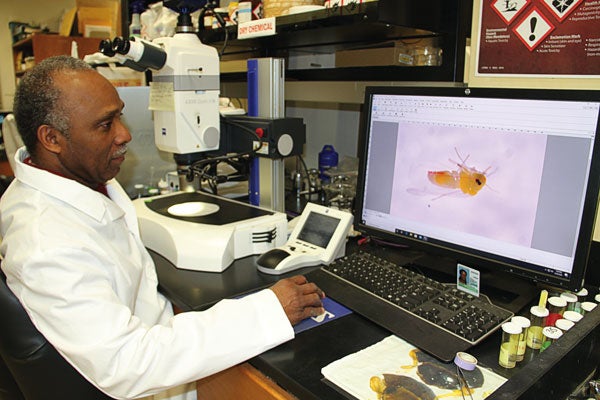
Alvin Simmons examines a whitefly in his USDA laboratory in Charleston, South Carolina.
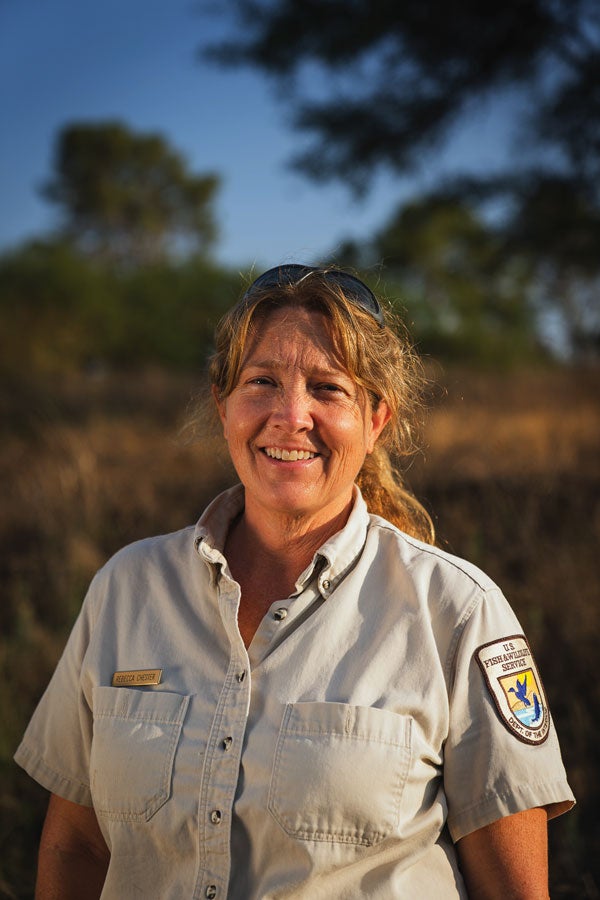
Beth Chester
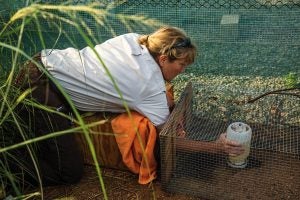
Beth Chester works at the Buenos Aires National Wildlife Refuge near Tucson.

Above, the male masked bobwhite foster parent sits with his adopted brood of captive-bred masked bobwhite chicks, bonding before release into the wild.
 When it comes to protecting species, Beth Chester ’92 wings it.
When it comes to protecting species, Beth Chester ’92 wings it.Working outside in Arizona in the summer where temperatures regularly exceed 100 degrees is not most people’s idea of a dream job. But Chester, a wildlife biologist, is not most people.
On a typical day in the field, Chester is surrounded by the grassland valleys, mesquite trees and desert scrub of the Buenos Aires National Wildlife Refuge near Tucson, which aims to reintroduce the endangered masked bobwhite quail into nature. The small reddish-brown bird is iconic to the area, yet wild populations no longer exist in the U.S.
“They would likely still be there if not for the impact humans have had on the landscape,” Chester says. “I think of them as an umbrella species; if you make things good for the quail, you’re also making things good for so many other native species.”
An outdoorsy career was not always part of Chester’s plan. For a long time, the Greenville native thought she’d go to medical school at the Brody School of Medicine. After graduating from ECU in 1992 with a biology degree, she got a job as a technician in a Brody lab and spent her weekends doing service activities with the local Sierra Club. That’s when she realized an indoor job was not for her.
“If you’re going to be doing something 40 hours a week for the rest of your life, it might as well be something you enjoy,” Chester says. So, she went back to ECU for her master’s in biology, this time with a plant and animal focus. “I think ECU gave me a really broad biology education. The department was well-represented in different subject areas and had really good professors,” she said. For her thesis, she worked with Carol Goodwillie, associate professor of biology, investigating the plant community at ECU’s West Research Campus (see page 22).
From there, Chester’s career took her west to Colorado, Utah and Wyoming to survey rare plant species, then to Texas to protect the Attwater’s prairie chicken for the U.S. Fish and Wildlife Service. “They are such comical birds and fun to watch,” Chester says. (And they have an elaborate courtship dance worthy of the Discovery Channel.)
For the last four years, Chester has been stationed at the Buenos Aires refuge in Arizona as part of the U.S. Fish & Wildlife Service Southwest Region Biological Sciences Division. She returns to Greenville at least once a year to see friends and family, and to check in with Goodwillie from time to time. Between visits, you can usually find her outside – with sunscreen, sunglasses and lots of water.
– Erin Ward
 D.R. Bryan ’75 builds for
today and the future.
D.R. Bryan ’75 builds for
today and the future.It was a seat in Professor Stan Riggs’ geology class at ECU that helped pique Bryan’s interest on the way to his career as a real estate developer.
“I did not have a defined career path or a predetermined major when I began at ECU. So I floundered a bit,” Bryan said. “I took a wide variety of classes. Some, like the geology class with Dr. Riggs, I enjoyed more than others.” Bryan ’75 owns and operates Bryan Properties in Chapel Hill, a full-service real estate development company he founded in 1984. One of three principals in the firm, Bryan focuses on the management of nonresidential properties. He once credited the geology class with helping him better understand land development.
The company has developed more than a dozen neighborhoods — with more than 5,000 single-family and 600 multifamily homes and about 350,000 square feet of commercial space — primarily in the Triangle and Triad, as well as the Charlotte area. It is one of the largest residential developers in North Carolina. It’s also a major land conservationist.
Fran Bryan ’90, D.R. Bryan’s wife, has served on the ECU Foundation board for eight years and on the Honors College Advancement Council for the last four years. The Bryans are also generous donors to ECU who support Access and Honors College scholarships. “We think that it is important to give back and to help today’s students in whatever way that we can,” he said.
He and his wife aren’t the only Pirates in the family. His daughter and son-in-law received master’s degrees from ECU.
At ECU, D.R. Bryan earned a bachelor’s degree in correctional services in the School of Social Work. After graduation, he worked for Pitt County at a residential treatment program for autistic and schizophrenic children.
He later worked in Rocky Mount for Mickey Dawson, an innovative developer. “From him, I developed an interest in real estate development,” Bryan said.
After six years, Bryan decided to study law and earned his Juris Doctor degree from Wake Forest University. In fact, Bryan was studying law at the same time he founded his company.
Bryan has seen many changes in residential development over the past 35 years. When he started, there were few if any amenities built with new neighborhoods, he said. Eventually, activity centers and gathering places within walking distance of homes were added. Recent projects feature streetscapes to replicate early 20th century neighborhoods.
Bryan Properties has received numerous awards including Business Conservationist of the Year in 2006 by the North Carolina Wildlife Federation for the Treyburn development north of Durham.
More than 10 years ago, Bryan partnered with the Triangle Land Conservancy to conserve almost 1,300 acres at the headwaters of Falls Lake near Treyburn. The agreement helped protect water quality, extend wildlife habitat corridors, reconnect elements of the Stagville state historic site and preserve part of the historic Indian Trading Path.
Before any soil was turned, developers shared a design charrette for their vision and to learn what community stakeholders envisioned for the Treyburn property, Bryan said.
“One of the ideas from the charrette was to conserve most of Horton Grove (the property adjacent to Stagville),” he said. “And that’s what we did.”
– Crystal Baity

D.R. Bryan
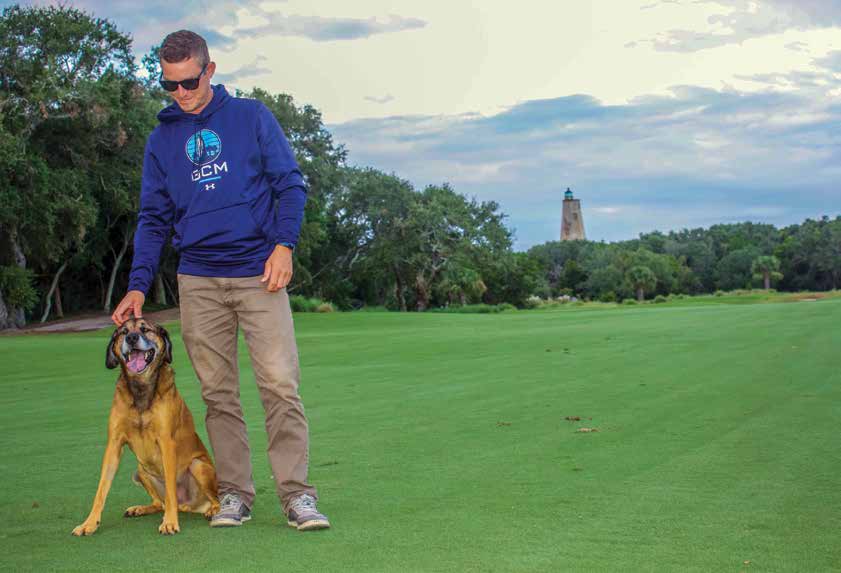
Adam Bachmeier ’14 and course dog Django look
after the land and the water at the 18-hole Bald
Head Island Club on the southeast N.C. coast.

 Adam Bachmeier ’14
keeps the turf green
and the water clean
at Bald Head Island Club.
Adam Bachmeier ’14
keeps the turf green
and the water clean
at Bald Head Island Club.Running a golf course on a sandy oceanfront carries its own set of challenges. For Bachmeier, just getting to work can be one. “This morning the fog was so thick on the river, the first boat to the island got about three-quarters of the way here and had to turn around,” he says one midwinter afternoon. But, he added, “there’s definitely worse commutes.”
Bachmeier is the golf course superintendent at the Bald Head Island Club, which Business North Carolina recently ranked No. 44 in the state. He puts his ECU business degree to work managing a $1.65 million operations budget and about 100 acres of land, including the 18-hole golf course and croquet greenswards.
Bachmeier, 36, took a winding path to the southeastern N.C. coast. He was born in North Dakota, moved to Indiana, back to North Dakota, then enrolled in Minnesota State University Moorhead to study landscape architecture.
“My best friend and I decided to relocate to somewhere more conducive to year-round golf,” he says. That somewhere was Winston-Salem, where he worked in the golf shop at Forsyth Country Club. Then he moved to Wilmington and the golf course staff at Eagle Point Golf Club, earned an associate’s degree in environmental sciences from Cape Fear Community College and worked his way up to senior assistant superintendent. He took the head job at Bald Head Island Club in 2016.
When he was thinking about continuing his education, one of his mentors at Eagle Point told him once he became a superintendent he would deal more with the business end of running a golf course than the agronomic end. East Carolina offered the best opportunity, he says.
“The access to online classes for a bachelor’s degree,” Bachmeier says of why he chose ECU. “There were times it was difficult,” he says, coming home after a long, hot day then logging on for class. But the remote learning and collaboration worked. “I really think it helps with what you’re going to experience in real life. You have to rely on yourself. It helps instill that work ethic.”
Last year, COVID-19 led to the course being shut down in March and April. It reopened with best practices — such as removing commonly touched items such as bunker rakes and flagsticks and limiting golf carts to a single rider each — and experienced its best year ever, with more than 34,000 rounds played. That was a 40% increase over 2019, Bachmeier says.
Being on the coast brings some agronomic challenges. The reclaimed water he uses for irrigation has a high bicarbonate content, which interferes with plant nutrient uptake. It’s also alkaline, with a pH of 7.6-7.8. The sandy soil allows water and fertilization to quickly leach through. Thus, he uses low doses of fertilizer and water and educates golfers about the benefits of not having lush, soft turf. He also works closely with the state Division of Water Quality and local utilities to help manage the island’s reclaimed irrigation water program. Due to the course being near the ocean and Cape Fear River, protecting groundwater is a priority.
“Dry, off-color turf doesn’t mean maintenance oversight,” he says. “It’s actually leading to the industry standard of firm, fast conditions. Those conditions really have some benefits for the environment.”
– Doug Boyd